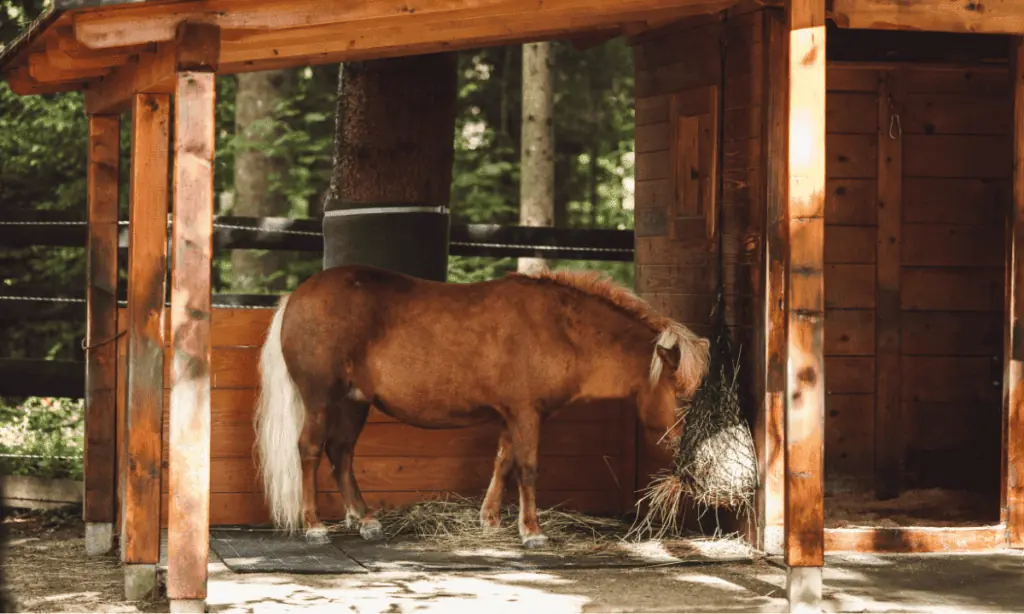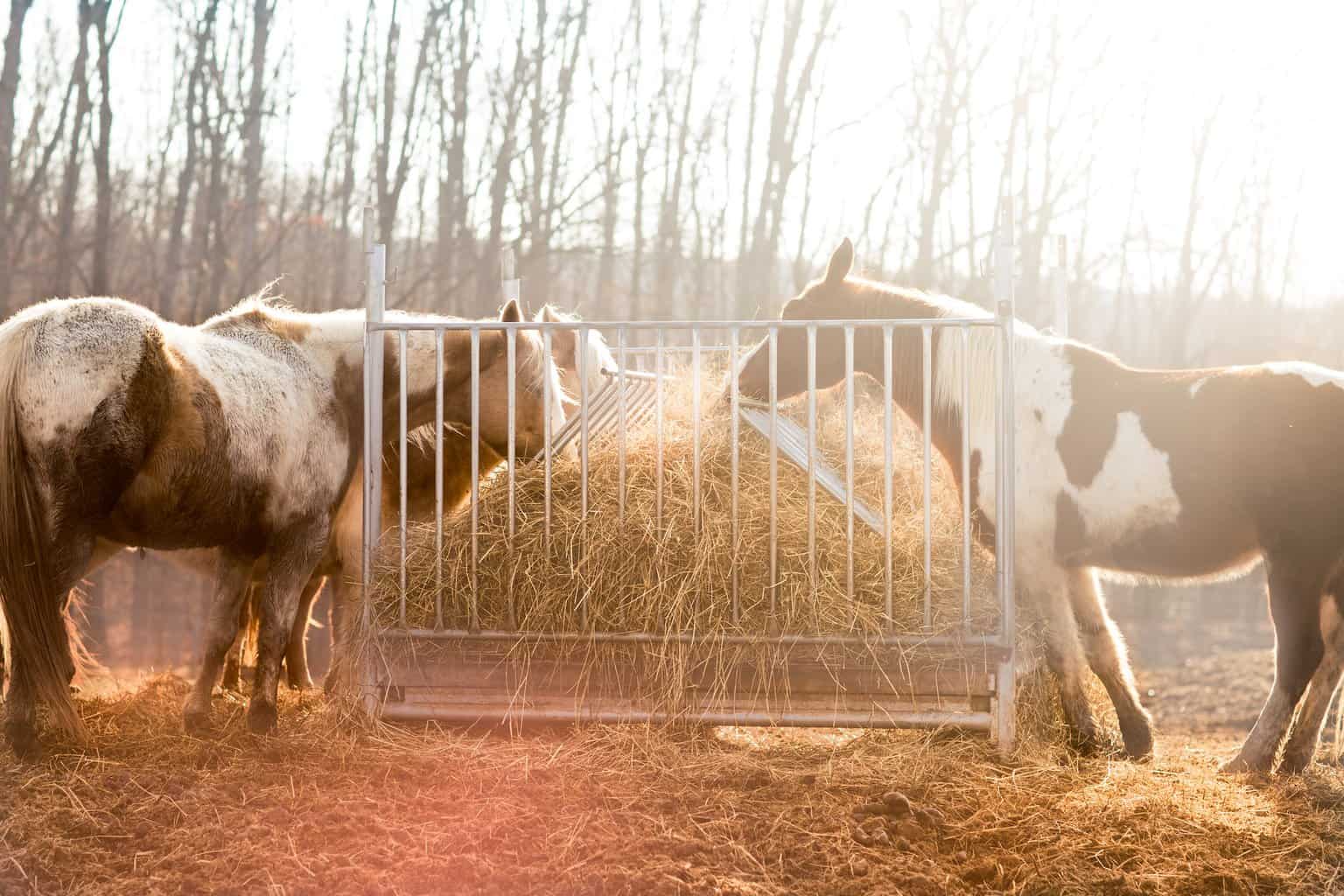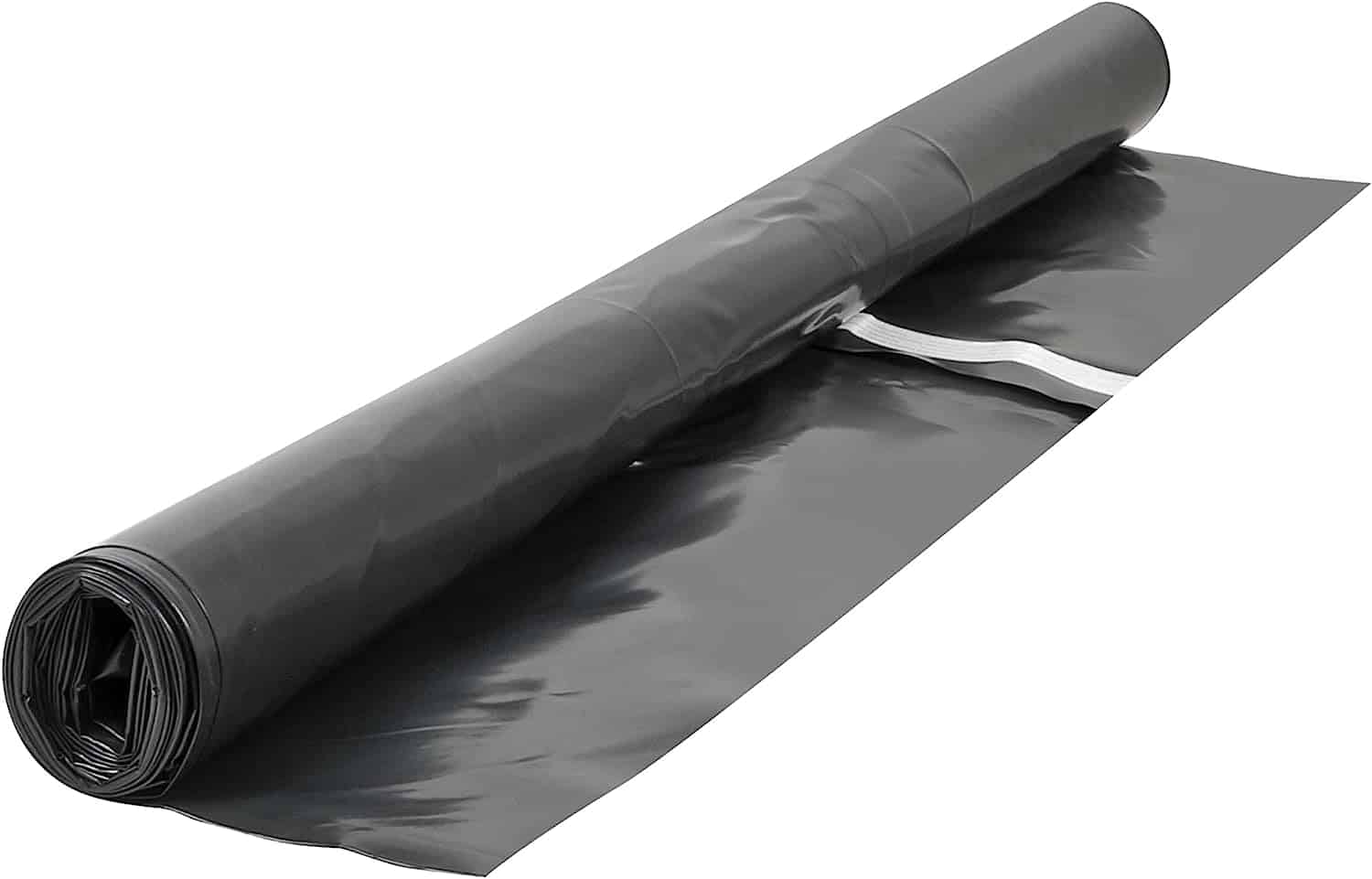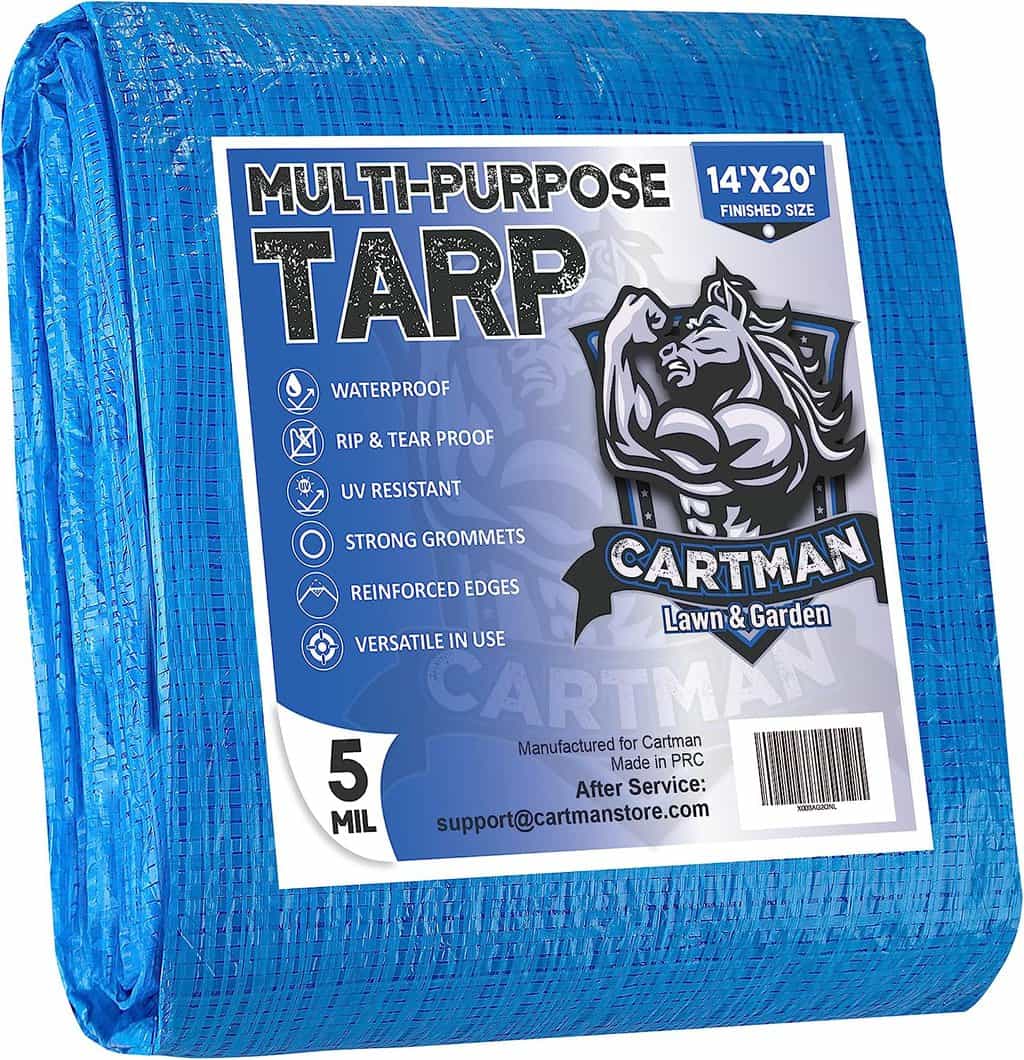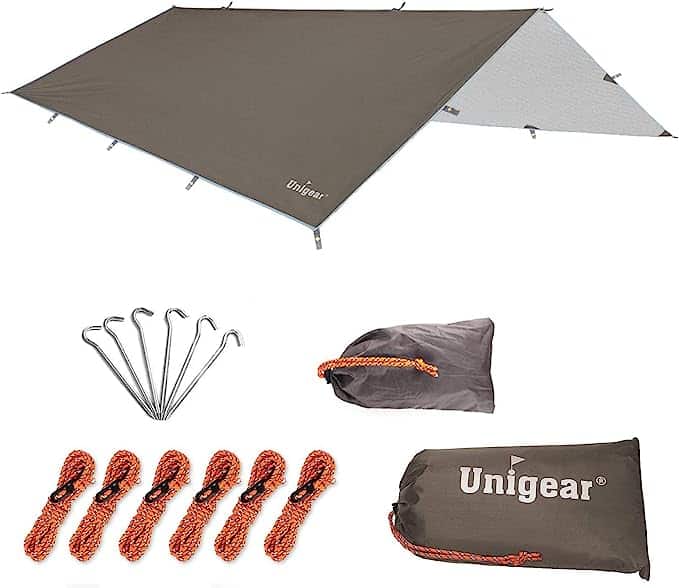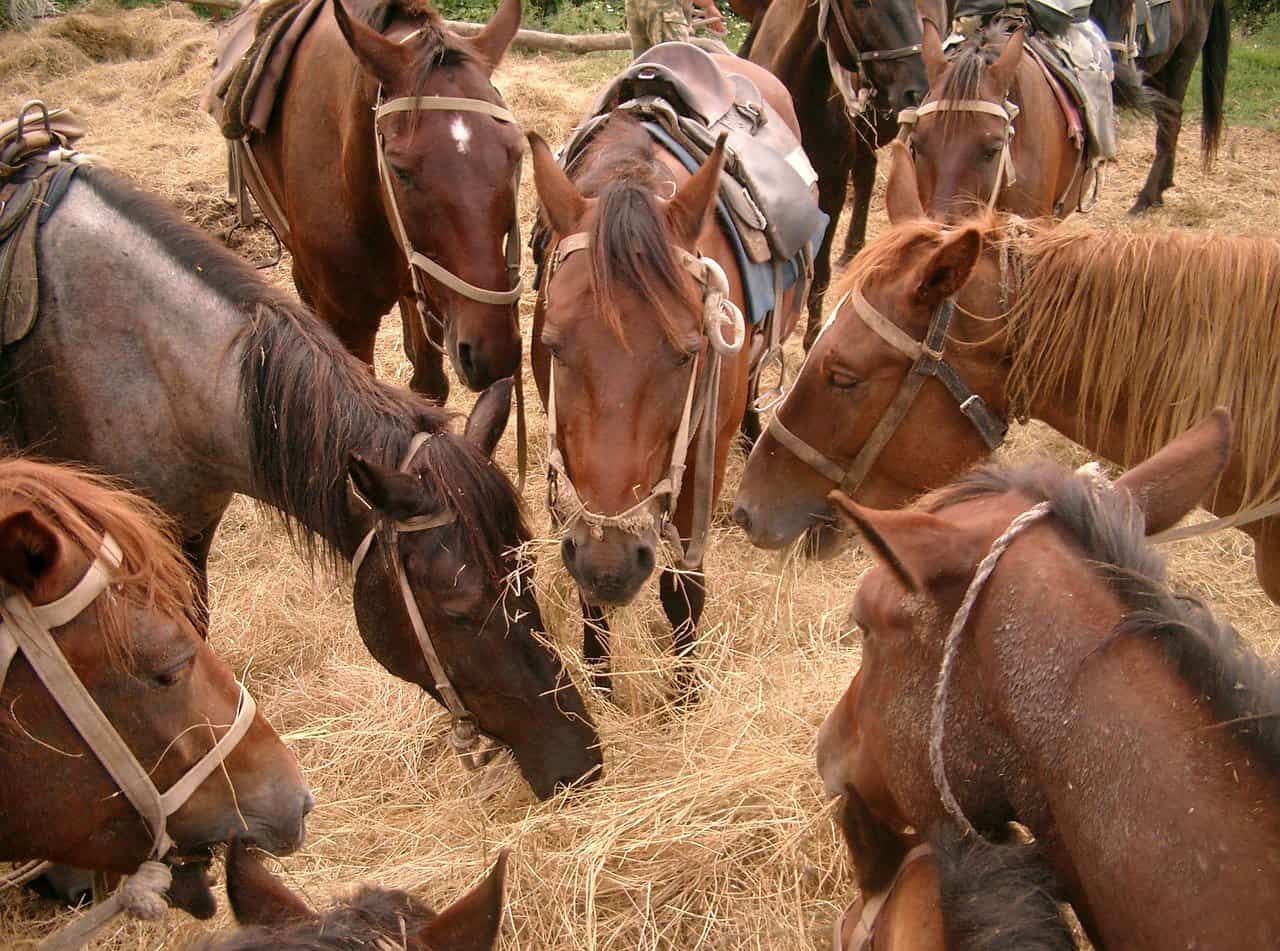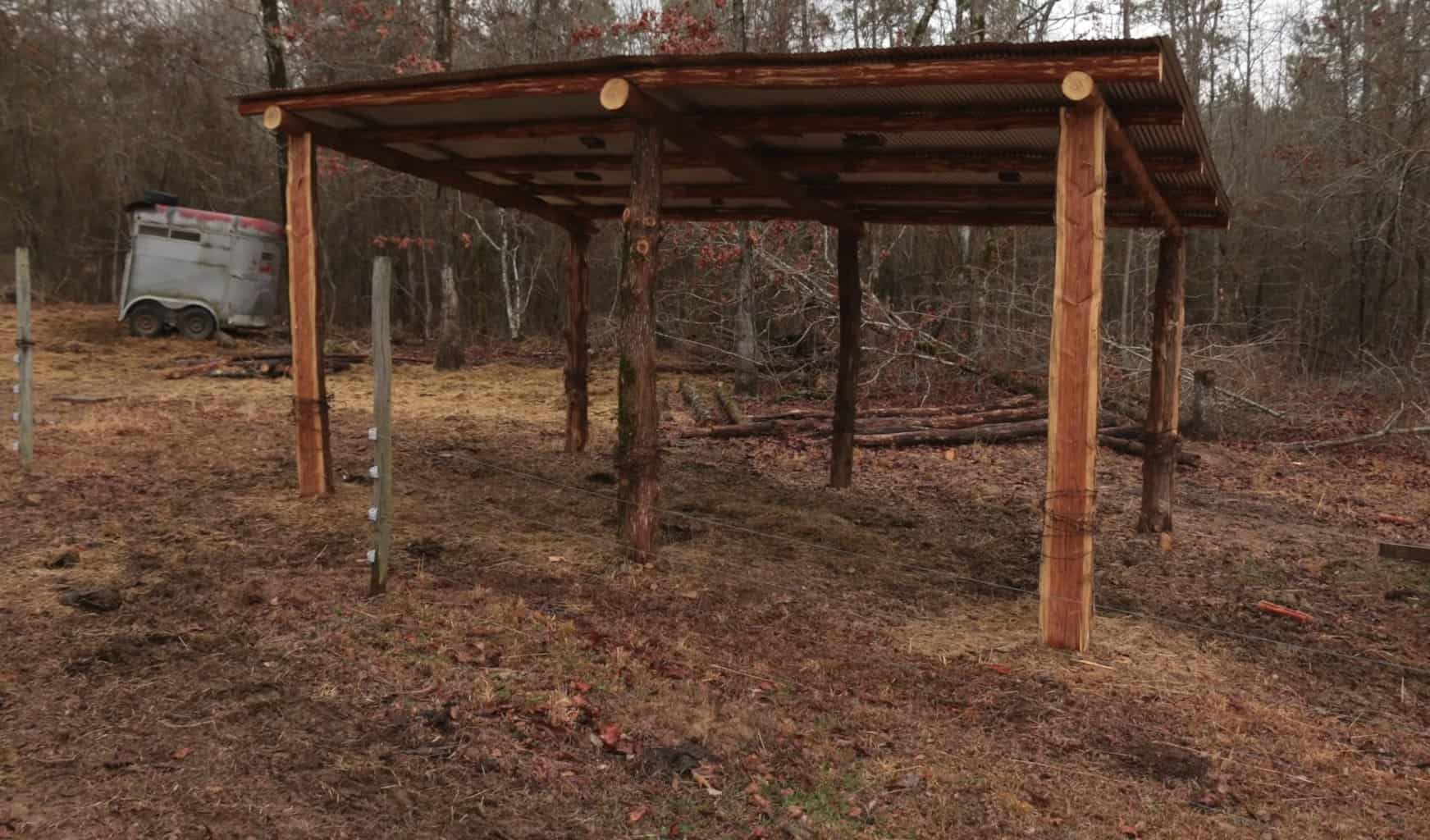- What is a Gaited Horse - October 5, 2023
- What to Look at When Getting a New Farrier - September 21, 2023
- Best Horse Feeds for Older Horses - September 21, 2023
Buying hay for your horses is a headache that all horse owners know (too well). If you are one of the fortunate few blessed with a large storage facility such as a barn, you can order many bales (which often brings a discount) and store them without batting an eye.
However, most horse owners aren’t that lucky, and you need to get creative with storing your hay so it will remain fresh and safe for your horse to eat.
I have often faced this challenge and perfected a few methods to keep hay fresh and dry, no matter the weather, without a storage facility. I’ll share these methods with you here.
Bottom Line Up Front: Store Hay like This
Hay bales can be stored in a few ways, depending on the shape of your bale, the materials you have to protect the bales with, and your budget to purchase the materials.
The best hay storage solutions for horses are:
- To cover the bales with a tarp, weighted down
- Place the hay bales on a freight pallet and “gift wrap” it with plastic or a tarp
- Building a makeshift shelter with excess building materials
- Using roof sheeting to cover bales
- Recycling old containers to help protect the bales
Hay Storage Considerations
There are a few considerations to bear in mind when deciding on the type of shelter your hay bales will need.
| Consideration | The Why |
| Sunlight |
|
| Rain |
|
| Ground Moisture |
|
| Mold |
|
| Bugs |
|
| Fire Hazard |
|
| Where to Place the Hay Storage Solution |
|
Hay Storage Solutions
Hay is usually baled with less than 20% moisture, and if you are storing hay long-term, opt for drier hay that has fully dried on the fields before being baled. Anything with more moisture allows bacteria to thrive and mold to form. So choose the right hay if you want to store it for over a week.
Now you know what you’re up against, I’d like to help you find a storage solution for your hay that works for you. Here are my favorite options:
Tarps
Plastic or PVC tarps are ideal for covering large bales. Since the material is quite cheap, you can purchase enough to cover the bale or bales well. Because plastic is quite flexible, you can more easily wrap your hay pile or large round bales.
I’d suggest a high-grade plastic, such as construction underlay film, which is dense enough not to rip or crack easily. It would be even better if you are fortunate enough to have some second-hand truck tarps.
If you store hay frequently, it’s worth investing in a commercial waterproof tarp like this one, which is rip-resistant, comes with grommets, and is large enough to cover several bales for long-term storage. A rain fly can also work well.
How to Do It
For temporary hay bales that you will open and use soon:
- Place the hay on a large wooden storage pallet or lay out several bricks to elevate the hay from direct contact with the earth.
- Cut a tarp large enough to cover the hay from end to end in all directions.
- Use a rope to wrap around the top of the hay, securing the tarp from blowing away.
- Add some old tires or stones on top of the tarp to weigh it down.
Pros
- Cost-effective
- Can be adjusted as needed
- When not in use, fold these materials away for next season’s hay
- Can cover hay anywhere
Cons
- Not foolproof, and in severe storms, water may penetrate
- If placed in direct sunlight, the tarp could sweat, making the hay damp
What I Like
I like that it’s so easy to keep the materials handy for when your hay delivery arrives. The versatility of this storage solution enables you to store multiple bales of any dimension to fit your budget.
Combining tarp with other materials will offer more opportunities for adequately storing hay.
Top Tip: Place an additional double section of tarp under the stones or wood pallet when storing hay for more than a week or two. This will help isolate the bales from the soil completely and prevent bug action or plants from growing into the bales.
Build a Makeshift Shelter
A makeshift shelter can be handy to help keep your hay fresh. First, scout around to see what materials you have on hand. Next, plan how you can construct a lean-to or temporary shelter. Even an old tent could work well to keep hay dry.
Consider making a raised floor of wooden pallets, then leaning wood pallets on their sides and securing this with string or nails. Place your hay inside the large “crate” and cover it with a tarp to make it waterproof.
Pros
- Ideal for a long-term storage solution
- Many different materials are used to make a makeshift shelter: old tires, drywalling, roof sheeting, metal beams, fence posts, part of a collapsed building, old water troughs, and more
- A very budget-friendly solution
- Can store more hay for longer, with the potential to retrieve hay more easily
Cons
- Take care with the materials you choose, as some materials may attract termites
- Long-term temporary shelters can become a nesting places for critters like rats and snakes
What I Like
I love recycling; making a storage area out of old materials is perfect. Most farmyards have loads of old materials, such as old stable doors, that you could use.
Remember to check whether the shelter is weatherproof, and inspect it regularly for signs of pests.
Recycled Containers
Many different containers are large enough to fit a bale or ten, especially if you buy square bales. Even round bales can fit if your container is large enough.
Consider recycling containers like old water towers, grain silos, old chicken coops, garden sheds, unused plastic pool shells (the kiddie kind), or a shipping container.
Pros
- It can cost you absolutely nothing
- Potential to store many bales, depending on the size of your recycled container
- Often doesn’t need any additional waterproofing
Cons
- Clean recycled containers thoroughly to avoid contamination or chemical leaching
- It could become quite unsightly to look at a broken down container if you don’t paint it or hide it well
What I Like
I love the unexpected element, and I’ve made some grand hay storage solutions out of random items I picked up next to the road.
Once, I even turned a discarded kids’ slide into an ideal hay storage area for four square bales at a time. I could even push a few slices of hay down the slide straight into my hay nets.
Roof Sheeting Shelter
Metal roof sheeting or corrugated iron panels can create a shack or shed to keep your bales in. This type of structure becomes a more permanent solution, and if you construct it well, you can use it for several seasons.
Simply create a wood frame, cover it with the metal sheeting, and leave one sheet on hinges or with support so you can open it to retrieve hay.
Alternatively, you can place the bales on a wood pallet, then lay the roof sheeting over the hay, tying the ends to prevent wind gusts from carrying them off. Adding stones and tires on top will also secure it against mild winds.
Pros
- An effective way to keep hay dry and out of the sun
- Potentially much easier to use the hay that you store
- It can be cost-effective if you have old or second-hand roof sheets
Cons
- Sheets can be heavy to move and position, requiring assistance
- Danger if roof sheets dislodge and get swept up in a storm
- It can be expensive when you have to buy the sheets new
What I Like
I love that you can build your own “mini barn” with roof sheets. However, you should never place the hay right up to the sheeting as the direct sun can warm the sheets enough to set fire to the hay. Always leave an “air pillow” around the bales to allow for ventilation.
Storing Hay in Smaller Quantities
Sometimes you want to store hay in smaller quantities, such as nets for when you travel with your horse to shows or if you are away for a few days and need someone else to feed your horses.
These mini-storage solutions keep hay nets fresh and out of your horse’s reach until you want them fed.
Old Oil Drums
An oil drum can make a lovely storage solution for as many as three filled hay nets. Ensure the drum is clean and has a well-fitting lid.
Drop your filled nets inside, secure the lid, and your hay nets are safe and dry.
An Old Freezer
An old deep freezer can secure three to four filled hay nets or a square bale and a half.
Best of all, the freezer has a hinged lid and lock to keep your hay secured. Some horse owners even keep a freezer in their stables to store horse feed.
Covered with Tarp
If you have to hang filled hay nets somewhere for a friend to use, then try threading a large square of plastic or tarp over the hay net. It will create a little upside-down umbrella to keep the hay dry and discourage casual grazers.
Crate It
For those lucky enough to have a large plastic crate, such as those used in the shipping or vegetable industries, consider upcycling a crate to cover a bale or a few filled hay nets.
Simply line the inside of the crate with plastic, then flip it over the nets or the bale.
What If You Can’t Create a Storage Solution?
If you can’t make any shelter to store your bales, ensure your hay is never placed directly on the ground. Placing stones, wood posts, or a storage pallet under your hay will prevent it from standing in water if it rains. Hay will dry out if it gets some rain exposure. Endless rain for several days will, however, destroy the hay completely.
Round bales are the most water resistant, and you can store these on their round (or rolling) side. Storing the bale on its end will allow water to run into it.
Square bales are less water-resistant, and you need to try and position them so the sides and ends of the bales are toward the direction of rain. Even if you can only partially cover the top with a board or small tarp, it will give your hay a better chance of not soaking through.
FAQs
Answer: It’s best to keep hay under the cover of a roof or shelter to keep it dry and out of the rain. A barn, shed, or structure can help keep hay safe from the elements, ensuring you don’t lose thousands of dollars as hay is expensive to replace.
Answer: Hay should be elevated off the ground and covered so it doesn’t get wet, so placing it on a pallet and covering it with a tarp is one of the best options. Source one from a construction yard for free; a tarp can be cheap.
Answer: Hay doesn’t have an expiration date as long as the hay is kept dry and out of direct sunlight. Correctly storing hay is an investment, as good-quality hay remains nutritious many years after harvesting as long as it is dry, mold-free, and insect-free.
Conclusion
Keeping a horse can become expensive, especially if your hay stores become spoiled and you have to replace these. However, with these tips and ideas, you can store your hay bales for as long as needed, no matter your budget.
Consider using tarps, wooden pallets, old containers, roof sheeting, and even an old tent to keep your hay in the best condition.
Your horse will thank you almost as much as when you give them treats.

